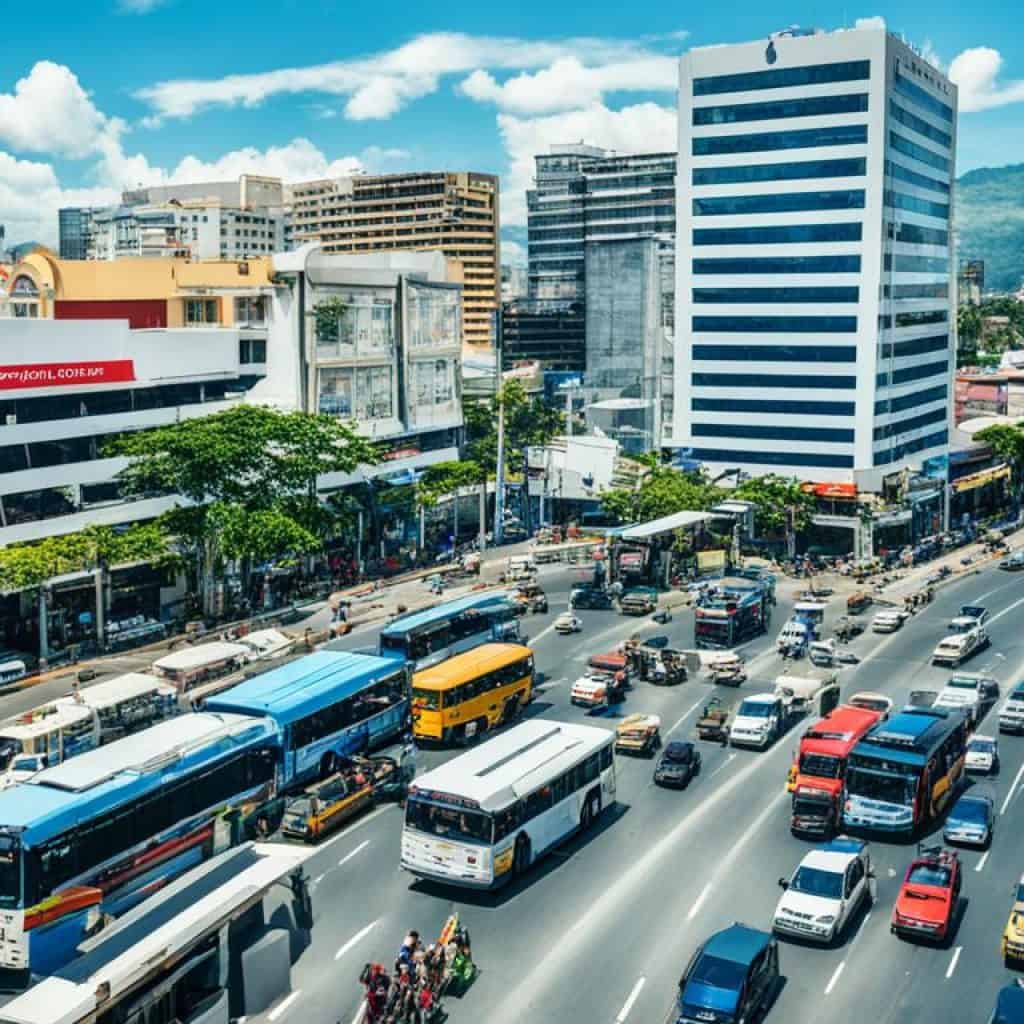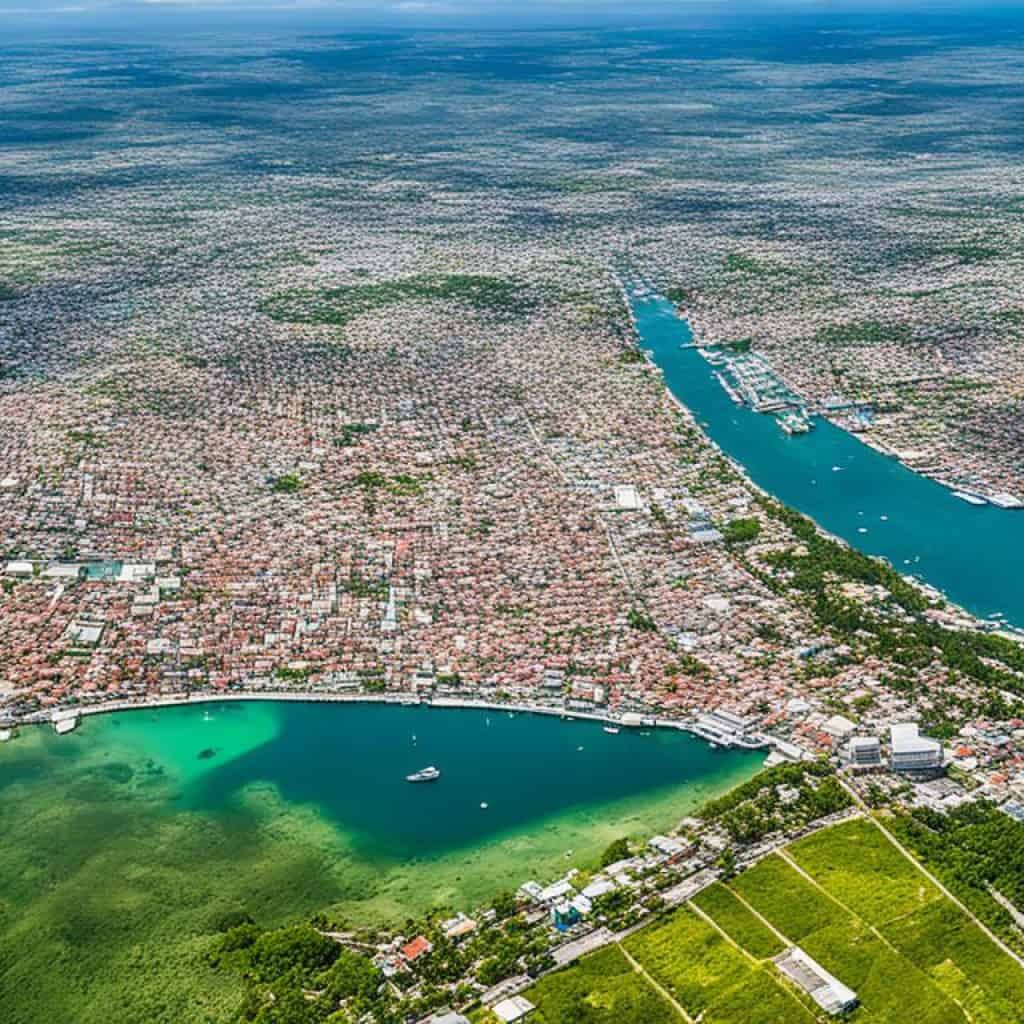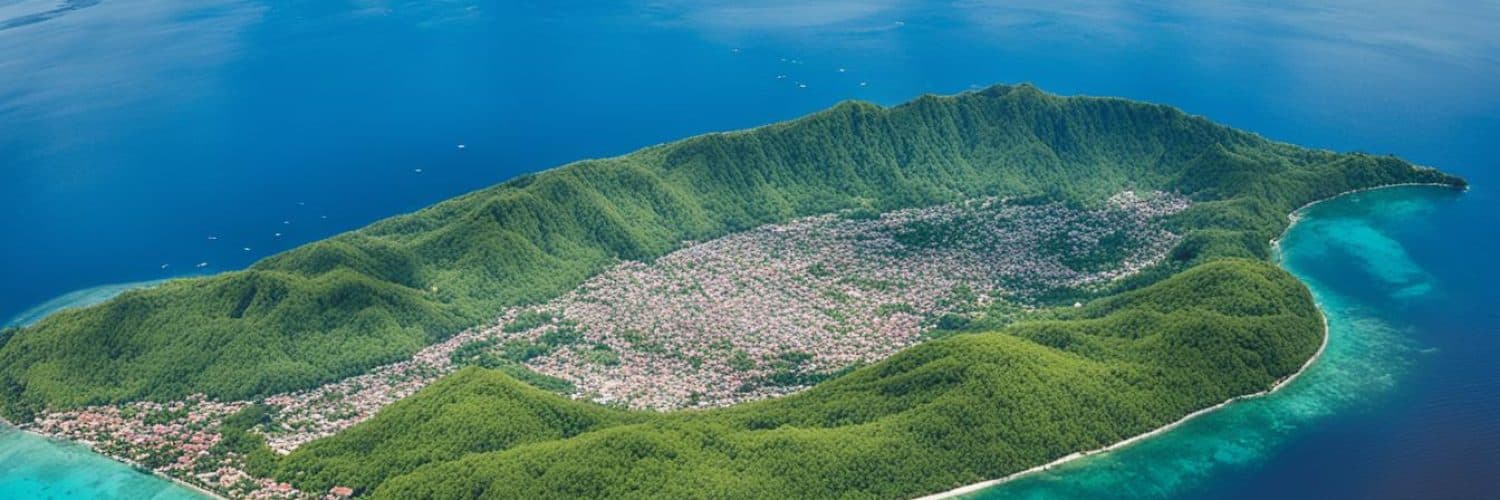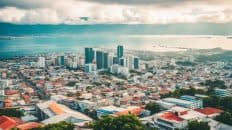Have you ever wondered about the location of Cebu in the Philippines? Is it part of the Visayas region or something altogether different? Let’s unravel the mystery and explore the geographical significance of Cebu, a province that holds a prominent place in the heart of the Central Visayas. Prepare to have your preconceptions challenged and your curiosity satisfied!
Key Takeaways:
- Cebu is located in the Central Visayas region of the Philippines.
- The province is composed of the main island of Cebu and its surrounding islands and islets.
- Cebu City, the capital of the province, is one of the most historic cities in the country.
- Cebu is geographically part of Visayas, which is one of the three main island groups in the Philippines.
- By the end of this article, you’ll have a newfound understanding of Cebu’s location and its significance within the Visayas region!
The Geography of Cebu
Cebu is a province located in the Central Visayas region of the Philippines, specifically in the Cebu Philippines region. It is part of the larger Visayas island group and is known for its stunning natural beauty and rich cultural heritage. The province is comprised of the main island of Cebu, as well as 167 smaller islands and islets that surround it, making it a dream destination for island-hopping adventures.
Cebu City, the capital of the province, is situated on the eastern coast of the main island. It is a vibrant and bustling city that serves as the region’s economic and cultural center. The city is known for its historical landmarks, modern infrastructure, and warm hospitality.
To the east of Cebu lies Mactan Island, which provides natural protection to the province. To the west, Cebu is bordered by the majestic Cordillera Central mountain range, adding to the province’s scenic beauty and providing opportunities for outdoor activities such as hiking and exploring.
The picturesque landscape of Cebu showcases the breathtaking natural scenery of the region.
Historical Significance of Cebu
Cebu, located in the Visayas region of the Philippines, holds immense historical importance. As the oldest city and the first capital of the country during the Spanish colonial period, Cebu has played a pivotal role in shaping the nation’s history.
In 1521, the Portuguese explorer Ferdinand Magellan made landfall in Cebu, marking the beginning of Spanish exploration and colonization in the Philippines. This event had a profound impact on the country’s culture and heritage.
Cebu City, as the center of these historical events, played a crucial role in the spread of Christianity across the Philippines. It was here that Roman Catholicism was introduced and established, shaping the religious landscape of the country.
Today, Cebu is renowned for its rich historical landmarks and cultural heritage, attracting visitors from around the world. The city’s historic sites tell the story of its past, offering glimpses into the colonial era and the fusion of European and Filipino cultures.
Explore the Historical Landmarks of Cebu
- Magellan’s Cross: An iconic symbol of Cebu, marking the spot where Ferdinand Magellan planted a cross upon his arrival.
- Cebu Metropolitan Cathedral: A magnificent church that showcases Spanish architectural influences and serves as the spiritual center of the city.
- Fort San Pedro: The oldest triangular bastion fort in the Philippines, built by the Spanish to defend against invasions.
- Taoist Temple: A tranquil place of worship and reflection, offering stunning views of the city.
- Basilica del Santo Niño: A significant religious site housing the revered Santo Niño image, considered the oldest Catholic relic in the Philippines.
Discover the rich historical tapestry of Cebu, where the past intertwines with the present, creating a unique cultural experience for all visitors.
| Key Features | Cultural Significance |
|---|---|
| Oldest city and first capital of the Philippines | Symbolizes the country’s colonial history and the beginning of Spanish influence |
| Portuguese explorer Ferdinand Magellan’s landing site | Marked the start of Spanish exploration and the spread of Christianity in the Philippines |
| Establishment of Roman Catholicism in the Philippines | Shaped the religious landscape of the country |
| Historical landmarks and cultural heritage sites | Showcase the fusion of European and Filipino cultures |
Economic Development in Cebu
Cebu, located in the Central Visayas region of the Philippines, has experienced remarkable economic growth, solidifying its position as one of the most developed provinces in the country. This bustling province has transformed into a global hub for various industries, attracting local and foreign investors alike.
One of the key drivers of Cebu’s economic success is its thriving business processing services sector. With a skilled workforce and competitive business environment, Cebu has become a prime destination for outsourcing and offshoring operations. Numerous companies have set up shop in Cebu, taking advantage of the region’s favorable business climate.
The tourism industry also plays a significant role in Cebu’s economic development. The province boasts stunning coastlines, pristine beaches, and a rich cultural heritage, drawing visitors from around the world. Cebu City, as the commercial and economic center of the region, serves as the gateway to these tourist destinations.
“Cebu City’s strategic location and well-developed infrastructure contribute to its thriving economy.”
Cebu’s strategic location in the center of the Philippines contributes to its economic success. The province serves as a vital hub for shipping and trade, with a busy seaport facilitating domestic and international commerce. Cebu City’s port is a major gateway for goods, fueling economic activity and trade within the region.
The province’s industrial sector also plays a significant role in its economic growth. Cebu is known for its manufacturing industries, particularly in furniture-making and heavy industry. Innovation and entrepreneurship thrive in Cebu, with local industries producing various goods and services that contribute to the province’s economic vitality.
Cebu’s economic development is further supported by its well-developed infrastructure. The province boasts modern airports, highways, and bridges that facilitate the movement of goods and people. These infrastructure investments enhance connectivity and accessibility, making Cebu an attractive destination for businesses and investors.
“Cebu’s economic growth has positioned it as a global hub for business, trade, and industry.”
With its flourishing business sectors, thriving tourism industry, strategic location, and robust infrastructure, Cebu continues to drive economic growth in the Philippines. The province’s vibrant economy attracts both local and international businesses, fueling innovation, trade, and industry. Cebu City’s role as the economic center of the region further strengthens its position as a major player in the global market.
By capitalizing on its strengths and embracing opportunities, Cebu is shaping its future as an economic powerhouse in the Philippines and the wider Southeast Asian region.
Cebu City’s Infrastructure and Transportation
Cebu City, located in the Cebu region of the Philippines, boasts a well-developed infrastructure and transportation system that supports the city’s economic growth and connects it with other parts of the province.
At the heart of Cebu City’s transportation network is its bustling seaport, serving as a major hub for domestic shipping. The port facilitates the movement of goods and passengers, contributing to the city’s vibrant trade and commerce.

“Cebu City’s seaport is a vital gateway for the transportation of goods and people, linking the city to various regions within the Philippines. It plays a crucial role in supporting the province’s economy.”
Additionally, Cebu City is home to the Mactan–Cebu International Airport, the second busiest airport in the country. This international airport provides convenient access to both domestic and international destinations, connecting Cebu City with the rest of the world. The airport serves as a major gateway for tourists and serves as a catalyst for the city’s tourism industry.
In terms of local transportation, Cebu City boasts a comprehensive network of highways and bridges, ensuring smooth connectivity within the city and neighboring areas. These well-maintained roadways make traveling within Cebu City convenient and efficient.
Furthermore, Cebu City has a reliable public transportation system, including buses, jeepneys, and taxis, providing residents and visitors with various options for commuting. These modes of transportation allow for easy access to different parts of the city and offer an affordable means of getting around.
Public Transportation Options in Cebu City:
- Jeepneys: Iconic and colorful, jeepneys are the most common mode of public transportation in Cebu City. These modified jeepneys serve specific routes, offering an inexpensive way to navigate the city.
- Buses: Cebu City has a well-organized bus system with routes covering major areas. Buses provide a comfortable option for longer journeys and connect the city with suburban areas.
- Taxis: Metered taxis are available in Cebu City, offering convenience and comfort for those who prefer a more private mode of transportation.
The city’s commitment to maintaining a reliable transportation infrastructure contributes to its economic development and enhances the overall quality of life for its residents. Cebu City continues to invest in its transportation systems to keep pace with the growing demands of its population and visitors.
| Transportation Infrastructure in Cebu City | Advantages |
|---|---|
| Seaport | – Connects Cebu City to other provinces and islands in the Philippines – Facilitates trade and commerce – Aids in the growth of the tourism industry |
| International Airport | – Provides domestic and international flights – Boosts tourism and trade – Enhances connectivity with other countries |
| Highways and Bridges | – Ensures smooth connectivity within the city and neighboring areas – Facilitates efficient transportation of goods and people |
| Public Transportation | – Offers affordable and convenient options for commuting – Allows easy access to different parts of the city – Accommodates the needs of residents and visitors |
The combination of a well-equipped seaport, a bustling international airport, excellent road networks, and a reliable public transportation system makes Cebu City a model of efficient infrastructure and transportation management. These factors contribute to the city’s thriving economy and make it an attractive destination for tourists and businesses alike.
Cultural and Educational Center of the Visayas
Cebu City, located in the heart of the Visayas region, is not only renowned for its vibrant culture but also serves as an educational epicenter for the Philippines. The city is home to several esteemed universities and educational institutions, attracting students from all corners of the country and nurturing the intellectual growth of the region.
Among the prominent academic institutions in Cebu City are the University of San Carlos, Cebu Institute of Technology, Southwestern University, University of the Southern Philippines, and University of the Visayas. These establishments offer a wide array of academic programs and are dedicated to providing a quality education to their students.
Moreover, Cebu City takes pride in celebrating its rich heritage and cultural diversity. It hosts numerous cultural events and festivals throughout the year, captivating locals and tourists alike. It is a city where the past and present converge, with historical sites such as Magellan’s Cross and the Basilica del Santo Niño symbolizing the city’s deep-rooted history and traditions.
“Cebu City’s cultural tapestry beautifully intertwines the legacy of the past with the aspirations of the present, creating an environment that fosters creativity, innovation, and appreciation for the arts.”
As the cultural and educational hub of the Visayas, Cebu City offers a melting pot of ideas, values, and artistic expressions. It continuously inspires individuals to explore their talents and pursue their passions.
Universities and Educational Institutions in Cebu City
| University | Programs Offered | Website |
|---|---|---|
| University of San Carlos | Various programs across multiple disciplines | Visit Website |
| Cebu Institute of Technology | Engineering, Computer Science, Architecture, and more | Visit Website |
| Southwestern University | Medicine, Dentistry, Engineering, and more | Visit Website |
| University of the Southern Philippines | Education, Criminology, Business Administration, and more | Visit Website |
| University of the Visayas | Law, Nursing, Maritime Studies, and more | Visit Website |
These institutions, combined with the city’s rich cultural landscape, form a dynamic and inspiring environment for both academic and personal growth. Cebu City’s commitment to education and its vibrant cultural heritage solidify its position as the cultural and educational heart of the Visayas region.
Cebu City’s Role in Trade and Commerce
Cebu City, located in the Central Visayas region of the Philippines, serves as a pivotal center for trade and commerce. Its strategic position within the Visayas region and the country as a whole makes it an ideal gateway for both domestic and international business activities.
The bustling port of Cebu City plays a crucial role in facilitating the import and export of goods, serving as a major conduit for interisland commodities such as copra, abaca, sugar, timber, and fish. This vibrant trade hub enables businesses to connect and thrive, contributing to the economic growth of the region.
With its well-established infrastructure and accessibility, Cebu City attracts both national and international companies, many of which have established branches within the city. This steady influx of businesses further strengthens Cebu City’s position as a commercial powerhouse and propels its thriving business sector.
Cebu City is renowned for its dynamic wholesale trade activities, serving as a hub for various products and services. The city’s wholesale markets offer a diverse range of goods, creating opportunities for entrepreneurs and business owners to engage in retail trade both locally and nationally.
Additionally, Cebu City boasts a robust manufacturing industry, contributing to the production of goods that support local and national supply chains. The city’s manufacturing capabilities span various sectors, including textiles, electronics, furniture, and processed food, further solidifying its role as a key player in the region’s commerce.
To visually represent the scale and significance of Cebu City’s trade and commerce, here is a breakdown of its major industries:
| Industry | Importance |
|---|---|
| Business Process Outsourcing (BPO) | Provides employment opportunities and drives the city’s economy. |
| Tourism | Contributes to economic growth through visitor spending and job creation. |
| Shipping and logistics | Facilitates the movement of goods within and outside the region. |
| Manufacturing | Generates revenue and contributes to local and national supply chains. |
| Retail and wholesale trade | Drives consumer spending and supports the local market. |
| Financial services | Provides banking, insurance, and investment opportunities. |
Through its strong presence in multiple industries, Cebu City continues to play a vital role as a major center for trade and commerce within the Visayas region and the Philippines as a whole. Its dynamic business ecosystem, coupled with its strategic location and thriving infrastructure, solidifies its position as an essential economic hub.
Tourism in Cebu
Cebu City, located in the beautiful region of Cebu Philippines, is a hotspot for tourists from both near and far. With its breathtaking sights, rich history, and vibrant culture, the city offers a wide range of attractions that cater to every traveler’s interests.
Explore Cebu’s Historical Landmarks
If you’re a history enthusiast, Cebu City is a treasure trove of historical landmarks that will transport you back in time. Visit Magellan’s Cross, a significant symbol of early Catholicism in the Philippines. Marvel at the stunning architecture of Cebu Metropolitan Cathedral, a beloved place of worship for locals and tourists alike. Discover the intriguing Fort San Pedro, a well-preserved Spanish fort that showcases the city’s colonial past.
Unwind in Pristine Beaches
Cebu City is renowned for its pristine beaches, where turquoise waters and soft sand beckon sunseekers. Spend a day at Mactan Island’s stunning beaches, where you can indulge in water activities such as snorkeling, diving, and jet skiing. For a quieter beach experience, head to Bantayan Island, known for its idyllic coastline and crystal-clear waters.
Experience Vibrant Nightlife
Cebu City comes alive after dark with its vibrant nightlife scene. From bustling bars to lively clubs, the city offers a variety of entertainment options for night owls. Dance the night away to the latest beats, enjoy live music performances, or simply unwind with a refreshing cocktail under the starry sky.
“Cebu City’s tourism industry thrives on its diverse attractions, attracting visitors from all walks of life.” – Local Tourism Official
Discover Natural Wonders
For nature lovers, Cebu City provides endless opportunities to immerse yourself in the beauty of its natural wonders. Visit the picturesque Kawasan Falls, where you can take a refreshing dip in its emerald-green pools. Embark on a hike up Osmeña Peak, the highest point in Cebu, and be rewarded with panoramic views of the surrounding mountains and islands.
Visit Iconic Cultural Sites
Immerse yourself in the rich cultural heritage of Cebu City by exploring iconic sites such as the Taoist Temple, a stunning Taoist place of worship known for its intricate architecture and serene ambiance. Pay your respects at the Basilica del Santo Niño, home to the country’s oldest religious relic.
| Popular Tourist Spots in Cebu City | Description |
|---|---|
| Magellan’s Cross | A historical cross believed to be planted by Ferdinand Magellan in 1521 during his arrival in the Philippines |
| Cebu Metropolitan Cathedral | A grand cathedral that showcases beautiful Spanish-influenced architecture and serves as a center of Catholic worship in the city |
| Fort San Pedro | A well-preserved Spanish fort that offers a glimpse into Cebu’s colonial past |
| Taoist Temple | A serene temple that showcases Chinese architecture and offers stunning views of the city |
| Basilica del Santo Niño | A historic church housing the Santo Niño de Cebú, a revered religious statue |
Cebu City’s tourism industry plays a vital role in driving its economy and providing employment opportunities for the local community. With its captivating attractions and warm hospitality, Cebu City continues to enchant travelers from around the globe.
Population and Infrastructure Growth in Cebu City
Cebu City, located in the stunning region of Cebu in the Philippines, has been experiencing remarkable population growth, driven by its abundant economic opportunities and excellent quality of life. According to the 2020 census, the city boasts a population of 964,169 people, solidifying its position as the sixth-most populous city in the country.
This surge in population has resulted in an increased demand for the development of essential infrastructure to support the growing needs of the city. The city government has been dedicatedly implementing a series of projects aimed at accommodating this expanding population while ensuring sustainable urban development.
“The rapid growth of Cebu City’s population requires us to enhance our infrastructure to meet the needs of our residents. Our goal is to provide efficient transportation systems, well-connected roads, and quality public utilities,” said Mayor [Mayor’s Full Name].
The city’s infrastructure development initiatives include the construction of new roads, bridges, and housing projects, as well as improvements to existing infrastructure. These projects will not only enhance mobility within the city but also contribute to economic development and improve the overall quality of life for residents.
One of the prominent infrastructure projects in Cebu City is the [Infrastructure Project Name], which aims to improve connectivity and provide a more efficient transportation system. Additionally, the city is actively investing in public utilities such as water supply, waste management, and energy infrastructure to meet the growing demands of the population.
Population Growth in Cebu City
| Year | Population |
|---|---|
| 2010 | 823,824 |
| 2015 | 922,611 |
| 2020 | 964,169 |
The table above illustrates the significant growth in Cebu City’s population over the past decade. From 2010 to 2020, the population has increased by approximately 17%, reflecting the city’s attractiveness as a residential and commercial center.
The remarkable population growth in Cebu City presents both opportunities and challenges. While it signifies the city’s progressive economy and vibrant community, it also calls for a thoughtful and strategic approach to urban planning and infrastructure development to ensure sustainable growth and a high standard of living for its residents.
As Cebu City continues to thrive and evolve, the government remains committed to investing in infrastructure that supports the needs of its growing population, enhances connectivity, and fosters further economic development. With a clear vision for the future, Cebu City aims to maintain its position as a dynamic and thriving urban center in the Philippines.

Natural Disasters in Cebu
Like many parts of the Philippines, Cebu is prone to natural disasters, including typhoons, earthquakes, and flooding. The province has experienced several devastating typhoons in the past, resulting in loss of lives and infrastructure damage. Cebu City is also located on the Pacific Ring of Fire, making it prone to earthquakes.
The local government in Cebu has been taking proactive measures to ensure the safety of residents and visitors in the face of these natural disasters. Disaster preparedness and mitigation efforts have been implemented to minimize the impact and maximize the response in the event of a disaster.
For instance, early warning systems and evacuation procedures have been established to provide timely information and ensure the safe evacuation of vulnerable areas. Regular drills and training sessions are conducted to enhance the disaster response capabilities of both local authorities and the community.
“Being situated in a region prone to natural disasters, Cebu has made significant progress in disaster management. Our focus is on preparedness, response, and resilience, ensuring the welfare of our citizens during challenging times.”
In addition to preparedness and response measures, there are ongoing efforts to improve the infrastructure resilience of Cebu City. These include the construction of infrastructure that can withstand the impact of natural disasters, such as reinforced bridges, elevated roadways, and flood control systems.
It is important for residents and visitors to stay informed and follow the instructions of local authorities during times of natural disasters. By working together and prioritizing safety, the people of Cebu can face these challenges with resilience and protect their communities.
Major Natural Disasters in Cebu
| Disaster Type | Year |
|---|---|
| Typhoon | 2013 |
| Earthquake | 2019 |
| Flooding | 2020 |
Political and Governance Structure in Cebu City
Cebu City, situated in the magnificent region of Cebu in the Philippines, operates under a robust system of local governance. At the helm of this structure is the esteemed mayor, serving as the chief executive, accompanied by the dedicated city council who formulates crucial legislation.
Uniquely empowered with their own elected officials, Cebu City thrives under their provision of effective governance, implementing policies and programs that prioritize the welfare and prosperity of its residents. The local government remains committed to several vital aspects, such as infrastructure development, healthcare services, education, and public safety.
Embracing the diverse needs of its population, Cebu City’s political landscape remains dynamic, with different political parties contending for leadership positions in each election cycle. This democratic ebb and flow ensures an open platform for multiple perspectives, fostering a vibrant environment of collaboration and progress.
The Role of Local Government
The local government of Cebu City plays a pivotal role in orchestrating the growth and development of the region. Through strategic planning, they continue to spearhead infrastructure initiatives that enhance connectivity and facilitate economic opportunities for both residents and businesses.
“We are committed to creating an inclusive and enabling environment that empowers every member of our community.” – Mayor John Hernandez
Furthermore, the local government strives to provide accessible healthcare services, ensuring the well-being of Cebu City’s inhabitants. They also prioritize education, advocating for quality learning institutions and fostering an environment that nurtures knowledge and innovation.
Ensuring Public Safety
With unwavering dedication, Cebu City’s local government takes pride in prioritizing public safety. They employ diligent measures to maintain law and order, working closely with law enforcement agencies to safeguard the community. Preparedness in times of emergencies is a top priority, with active disaster response and mitigation strategies.
Empowering Collaboration
Cebu City’s governance structure encourages active citizen participation, empowering residents to voice their concerns and actively contribute to community-building efforts. Through engaged collaboration, the local government remains steadfast in preserving the heritage, culture, and values that are central to Cebu City’s identity.
“Together, we build a stronger and more prosperous Cebu City for generations to come.” – Councilor Maria Dela Cruz
By nurturing a harmonious relationship between the government and the people it serves, Cebu City sets a shining example of effective local governance rooted in transparency, accountability, and responsiveness.
Future Development and Challenges in Cebu City
Cebu City is a vibrant metropolis in the Central Visayas region of the Philippines. As the city continues to experience rapid growth and progress, there is a strong focus on future development and addressing various challenges. The local government, along with various stakeholders, is committed to sustaining the city’s economic growth and improving the quality of life for its residents.
One of the key aspects of future development in Cebu City is infrastructure improvement. The city aims to enhance its transportation network, including roads, bridges, and public transportation systems, to alleviate traffic congestion and improve connectivity. Additionally, urban planning plays a crucial role in ensuring sustainable development and creating livable spaces for the growing population.
Investing in sustainable industries is also a priority for Cebu City’s future development. The city recognizes the importance of balancing economic growth with environmental sustainability. By promoting green technologies, renewable energy, and eco-friendly practices, Cebu City aims to create a more sustainable and resilient urban environment.
However, along with future development, Cebu City faces certain challenges that need to be addressed. Traffic congestion is a major concern due to the increasing number of vehicles and limited road capacity. The local government is implementing various measures, such as improving public transportation systems and exploring alternative modes of transportation, to mitigate this issue.
Urbanization is another challenge that the city grapples with. Rapid urbanization puts pressure on land resources, housing, and public services. Cebu City is actively working on urban planning strategies to ensure proper land use, affordable housing options, and efficient delivery of public services to meet the needs of the growing population.
Furthermore, environmental sustainability is a significant consideration for the future development of Cebu City. The city is vulnerable to natural disasters, such as typhoons and earthquakes, and ensuring disaster preparedness and resilient infrastructure is crucial. Additionally, promoting environmental conservation, waste management, and sustainable practices will contribute to a greener and healthier city.
Future Development and Challenges in Cebu City Table
| Challenges | Solutions |
|---|---|
| Traffic Congestion | Improving public transportation systems, exploring alternative modes of transportation, and implementing traffic management strategies. |
| Urbanization | Proper urban planning strategies, including effective land use, affordable housing options, and efficient delivery of public services. |
| Environmental Sustainability | Disaster preparedness, resilient infrastructure, environmental conservation, waste management, and sustainable practices. |
Cebu City is determined to overcome these challenges and ensure the long-term growth and development of the city. By addressing these issues and embracing sustainable practices, the city aims to create a prosperous and livable urban environment for its residents and future generations.
Conclusion
Cebu is undeniably a significant part of the Visayas region in the Philippines. With its rich historical and cultural heritage, booming economy, and strategic location, Cebu City plays a vital role in the Visayas and the country as a whole. As one of the most developed provinces in the Philippines, Cebu has become a major center for trade, commerce, education, and tourism.
The city’s resilience in the face of natural disasters, such as typhoons and earthquakes, demonstrates its ability to bounce back and thrive. Additionally, Cebu City is committed to sustainable development, ensuring that it continues to progress while preserving its natural environment.
As Cebu City embraces opportunities and overcomes challenges, it remains a dynamic and vibrant destination in the Visayas. Whether you’re drawn to its historical landmarks, bustling business centers, or picturesque beaches, Cebu City offers something for everyone. Discover the wonders of this incredible city and experience firsthand why Cebu is an integral part of the Visayas region in the Philippines.


















Add comment